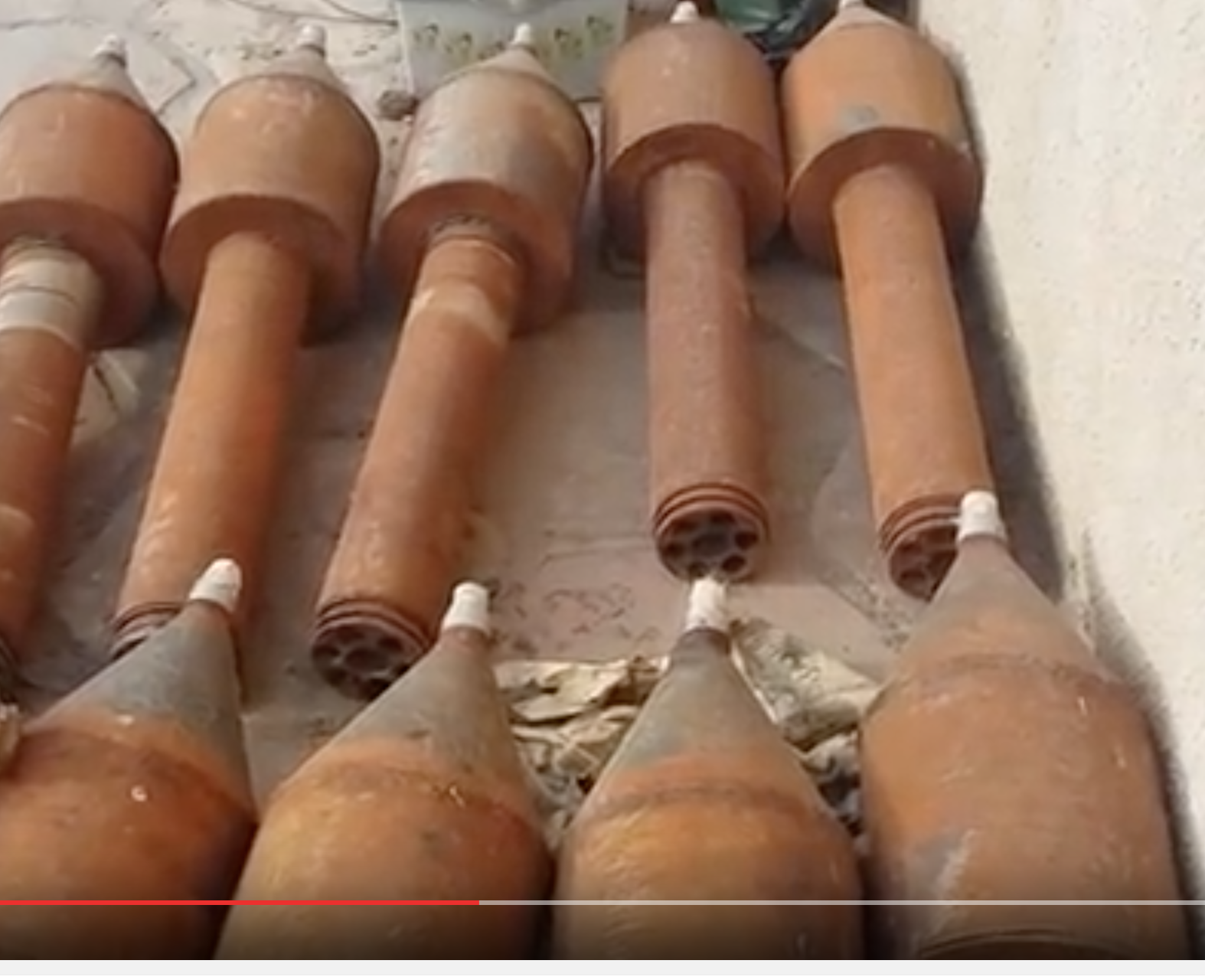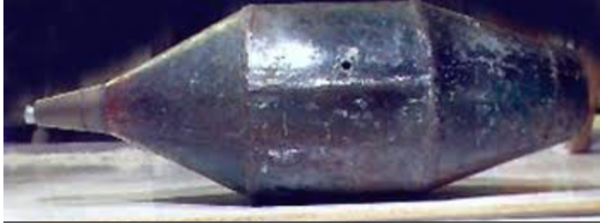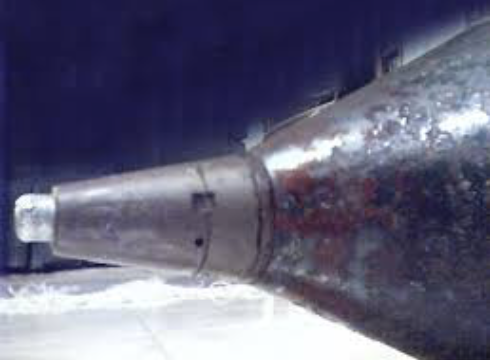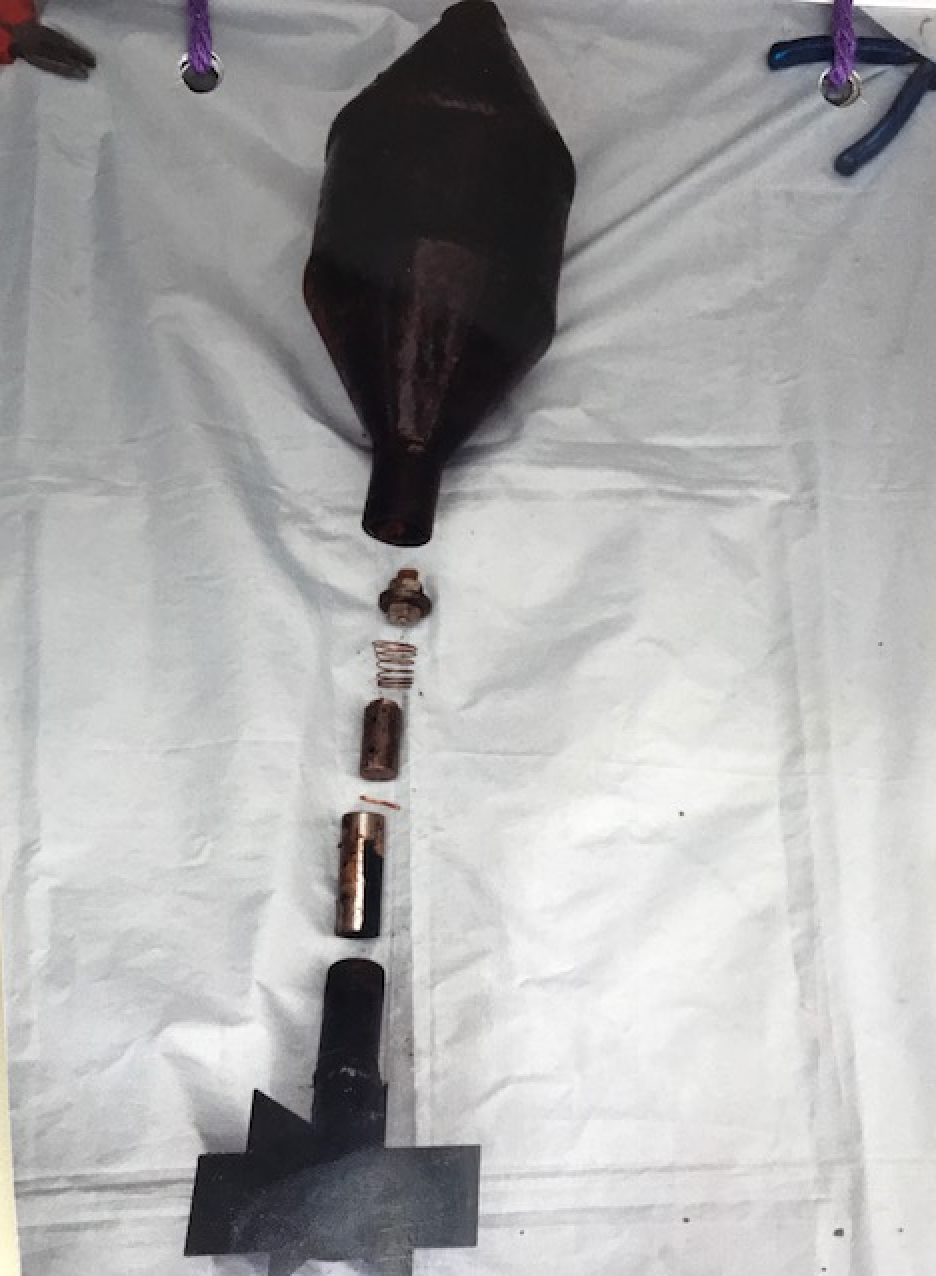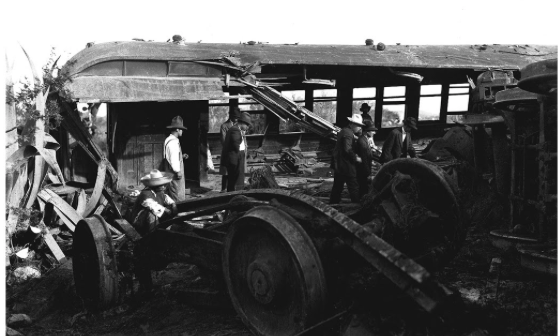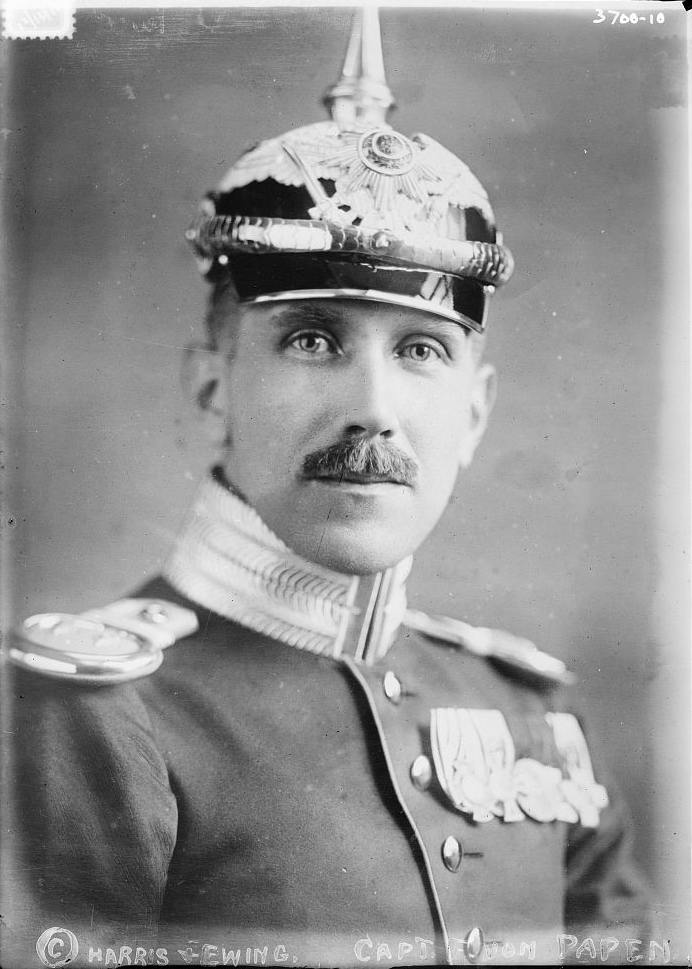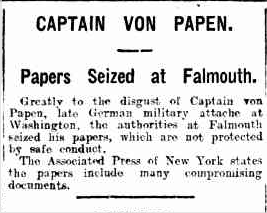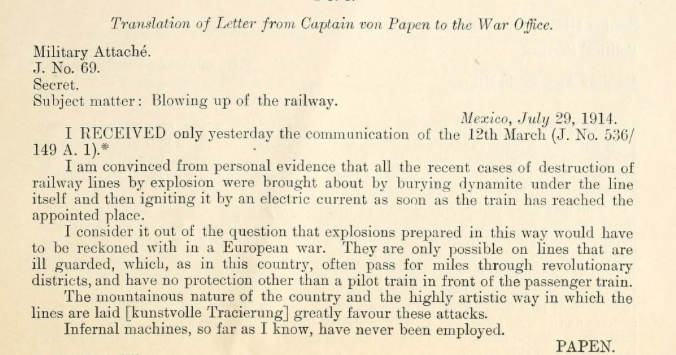The recent murder of people on Westminster Bridge and the stabbing to death of a policeman at the gates of the Houses of Parliament New Palace Yard have highlighted that the British centre of government and state power has a natural attraction to terrorists. In my blogs I often look at threads in history of terrorism. One can find, occasionally, interesting threads in the warp and weft of time, and usually I follow technical threads as far as I can. But Westminster provides another thread, at right angles, the thread of geography, in a history of explosives and munitions. Bear with me as I recount the explosive history of Westminster – some of which you will know and others you won’t. I have underlined certain specific locations in order to make the point about repeated locations. Westminster is a surprisingly compact place and most of the incidents listed below occurred within about 100m of each other. For context here’s a plan of the explosive incidents in the Houses of Parliament, just about all within a circus of 100m radius:
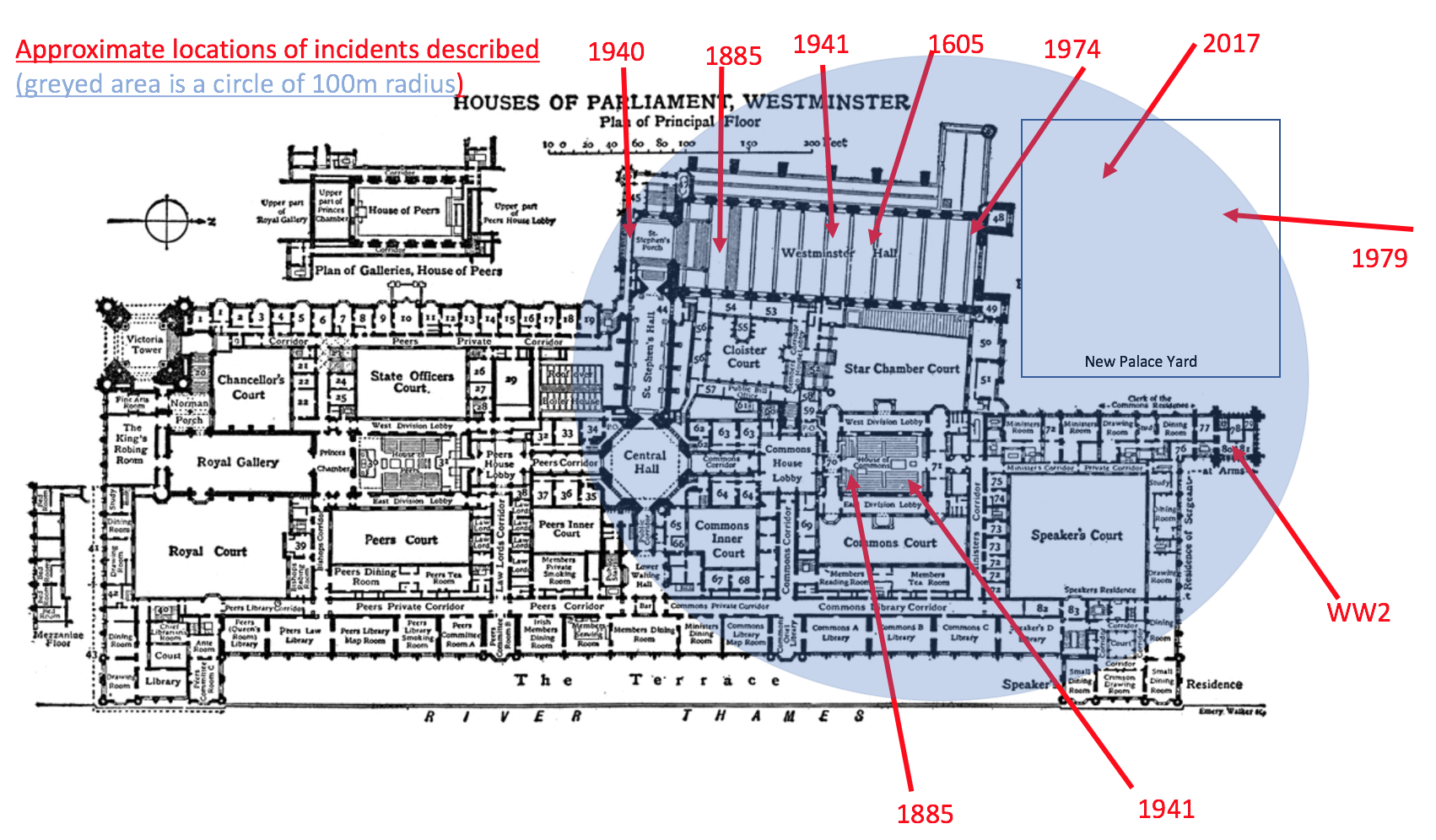 Locations and Dates – Westminster
Locations and Dates – Westminster
1605. The Gunpowder Plot. Of course you will know that the Gunpowder Plot targeted Parliament itself, and there is little new I can repeat here. But one aspect is interesting in the light of very modern accusation of “fake news” and “false flag” operations. There has been a school of thought over the ages since soon after the plot itself, that the Gunpowder Plot was a false flag conspiracy dreamt up by loyal royalists to discredit the Catholic opposition. The suggestion is that Sir Robert Cecil, the Royal Chancellor, coordinated a “false flag” operation for political motives, to persuade the public and the King himself that harsh measures were needed to keep persecuting Roman Catholics in England. There is also a suggestion that the gunpowder recovered from the 36 barrels discovered in the Westminster Undercroft had deteriorated so much that it may not have exploded anyway. In another interesting parallel with today, and attitudes towards Muslims after the recent Westminster attack, King James himself, speaking to both Houses of Parliament five days later made clear that he believed that the plot had been the work of only a few Catholics, not of the English Catholics as a whole. By modern terminology the device was a large timed IED, the timing component being burning fuze.
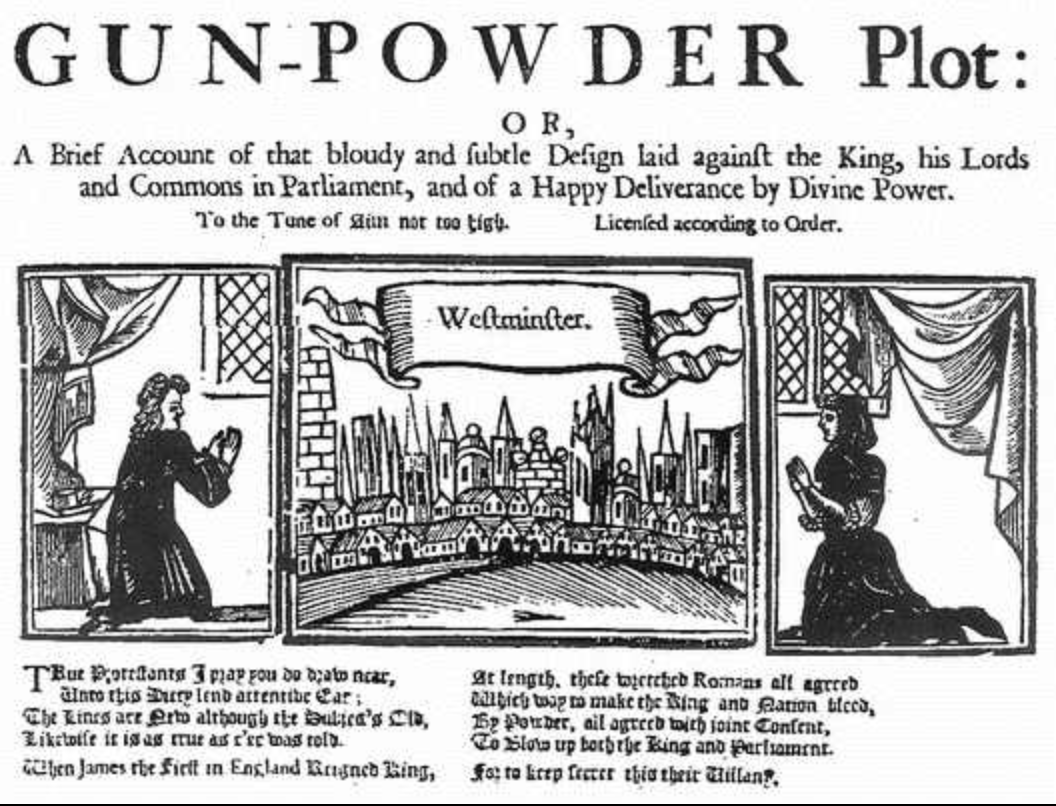 A report from a few years after the Plot
A report from a few years after the Plot
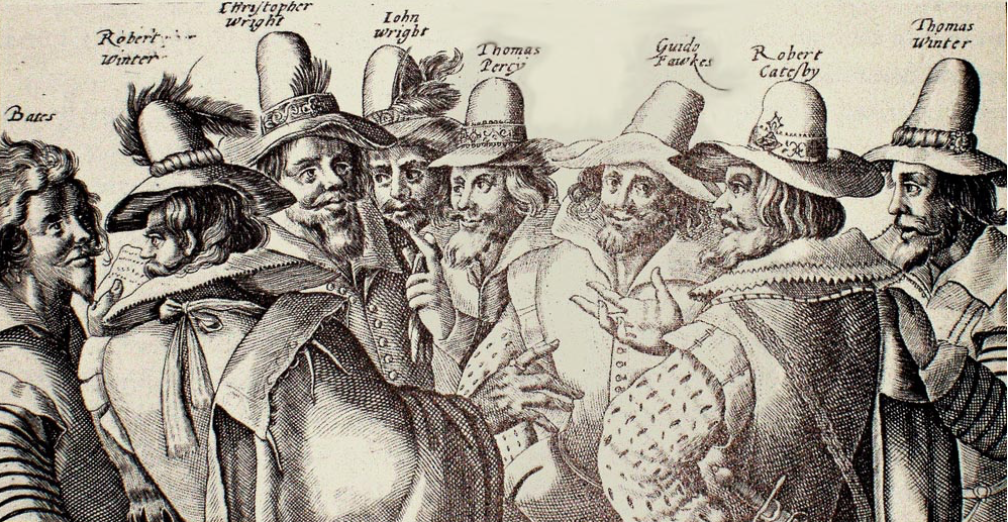
The Conspirators
1885. Dynamite Saturday – As part of a dynamite campaign Irish American “Fenian” terrorists planned and executed ”Dynamite Saturday” detonating a number of devices across London. One device exploded as it was being moved by policemen in Westminster Hall.
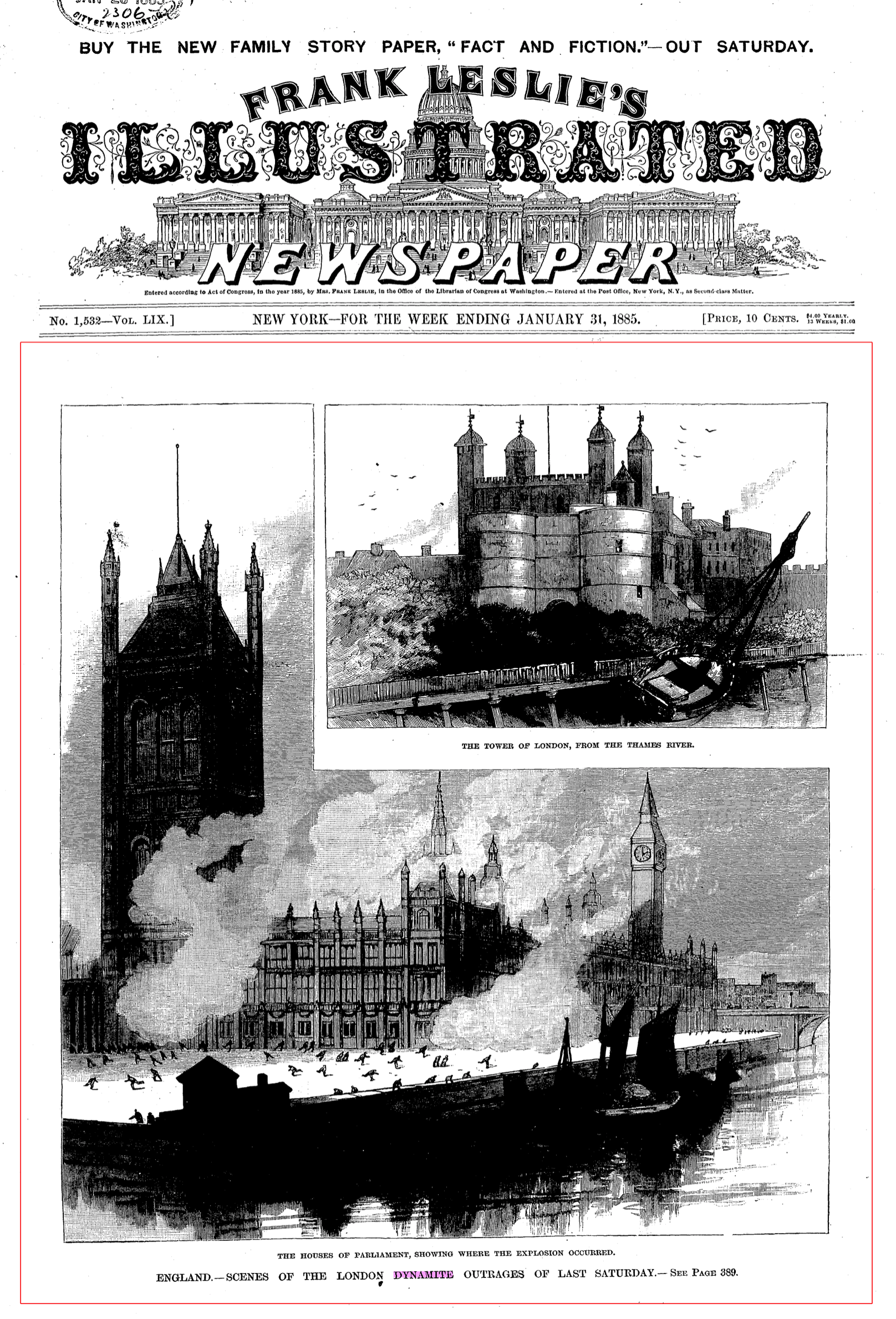
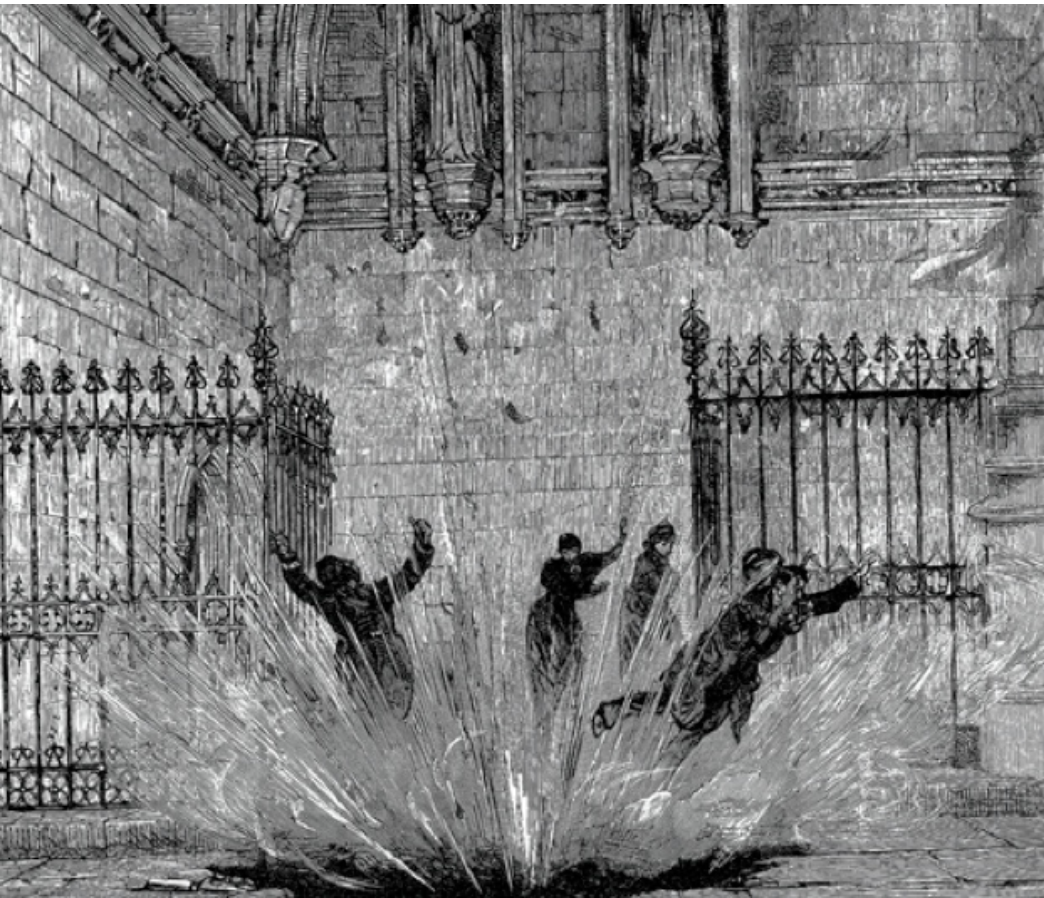
PCs Cole and Cox are blown up in Westminster Hall
PC William Cole was a London Police officer on duty in the Houses of Parliament on 24 January 1885. He was notified by a visitor, a Mr Green, about a smoking black bag on the steps between the St Mary Undercroft chapel and Westminster Hall, both within the Palace of Westminster. The bag was on the third step of the staircase that lead to the main part of Westminster Hall. Bravely, Cole picked up the smoking bag and ran up the stairs of Westminster Hall with the intent of moving the bag outside into New Palace Yard. He was preceded by Mr Green who shouted “Dynamite!” to clear the way. But before he could reach the door, the bombfuze began to burn his hand, causing him to drop the bag – a second later the bag fully exploded. Cole and his colleague PC Cox, were injured, their clothes largely blown off them and they lay, blackened in the crater caused by the bomb. Mr Green was injured in his eyes and his two female companions were “bereft of their upper garments”. Other police and the Deputy Segeant at Arm’s wife, Lady Horatia, rushed to attend to the injured. Cole was unconscious, and Cox was “rolling about, talking incoherently and hitting out with his fists although two constables held him down.’ Both officers were described in the politically incorrect language of the time as “black as n*****s”. Seconds later, another bomb exploded in the empty House of Commons. In one of those interesting pieces of history (given my interest in the Government’s Inspector of Explosives of the time, Colonel Majendie), Lady Horatia, the wife of the Deputy Sergeant was coopted by the police in the aftermath to help control access to the Hall. Imagine the scene, the redoubtable Victorian lady assuming the role of gate guardian to a terrorist bomb incident. A short, bearded foreign gentleman approaches and demands access in a German accent, to inspect the scene. Lady Horatia is having none of it and physically blocks his path , firmly instructing a footman to “put him out”, ejecting him from the Hall. It was in fact Dr August DuPre, the German born Chemist who was Col Majendie’s most important technical assistant and official Home Office consulting chemist who played a key and official role in investigating explosive crime. PC Cole (later promoted to Sergeant) regained consciousness the next day, and was awarded the Albert Medal for his bravery, which was presented to him on the exact site of the explosion. Mr Green suffered permanent injury to his sight but was not compensated despite the efforts of the Deputy Sergeant at Arms (probably prompted by the fierce Lady Horatia). Interestingly the body of PC Keith Palmer who was fatally stabbed in 2017 was kept overnight in St Mary Undercroft before his funeral. My assessment of the device based on an interpretation of the reports and the fact that a James Cunningham was seen lighting a fuze on a similar bomb that same day at the Tower of London was that the device was a timed IED, with less than 2.5kg of explosives, with burning fuze being the timing element. James Cunningham and an accomplice, Harry Burton, were sentenced to life imprisonment for their role in the bombings. Interestingly this bombing changed the ambivalent feeling of the USA towards the Fenians. Prior to this UK governmental efforts to encourage the US to constrain Fenian activity had fallen on deaf ears, but with an attack on parliament, wheels began to turn.
1939-1945. Although not terrorist attacks, the Houses of Parliament were subject to explosive attack frequently in WW2. It was hit by German bombs on 12 occasions (nine exploded, 3 were defused) and the House of Commons was destroyed in a subsequent fire after an incendiary bomb attack – one of numerous incendiary bomb attacks. The buildings were hit three times by our own anti-aircraft guns, one hitting Big Ben. Here’s a Pathe film of the aftermath of one attack. Particular damage was caused by an explosive bomb on St Stephen’s Cloister on 8 December 1940, and the incendiary attack that destroyed the House of Commons and damaged the roof of Westminster Hall occurred on 10 and 11 May 1941. Three people were killed in all the attacks.
Bomb damage St Stephens Cloister, 1940
1974. During the construction of the Underground carpark beneath New Palace Yard, the IRA was able to exploit the poor control over a large number of casual workers employed on the contract to place a bomb in a ladies toilet adjacent to Westminster Hall. It exploded at 8am on 17 June, igniting a gas main causing considerable damage (photo).
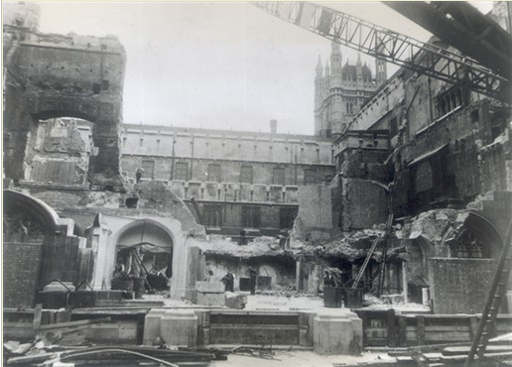
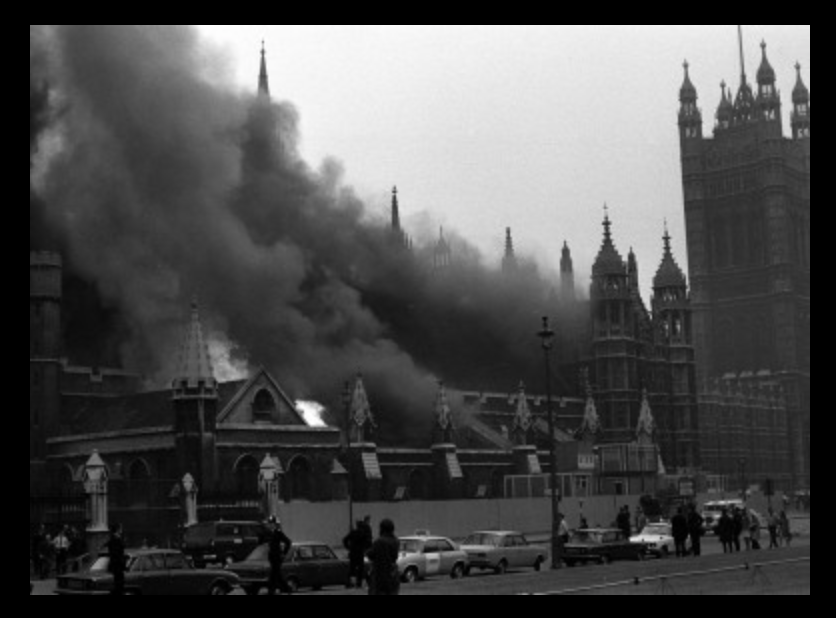
1974, Westminster Hall Bombing
The IRA claimed it contained 20 lbs of explosive. That might be an exaggeration. The device was probably on a mechanical timer and laid the previous evening, I suspect. The authorities in Westminster have deliberately not removed all the black soot and sign of burning from one corner of Westminster Hall, where is remains to remind those present of the threat to democracy
1979. The Irish National Liberation Army (INLA) planted a bomb on the car of MP Airey Neave. the device exploded as Neave drove his car out of the underground car park in New Palace Yard. Neave died shortly afterwards. the device probably contained less than 2kg of explosive and was probably initiated by a ball bearing tilt switch. It is possible that the device was placed on the car before it entered Parliament buildings
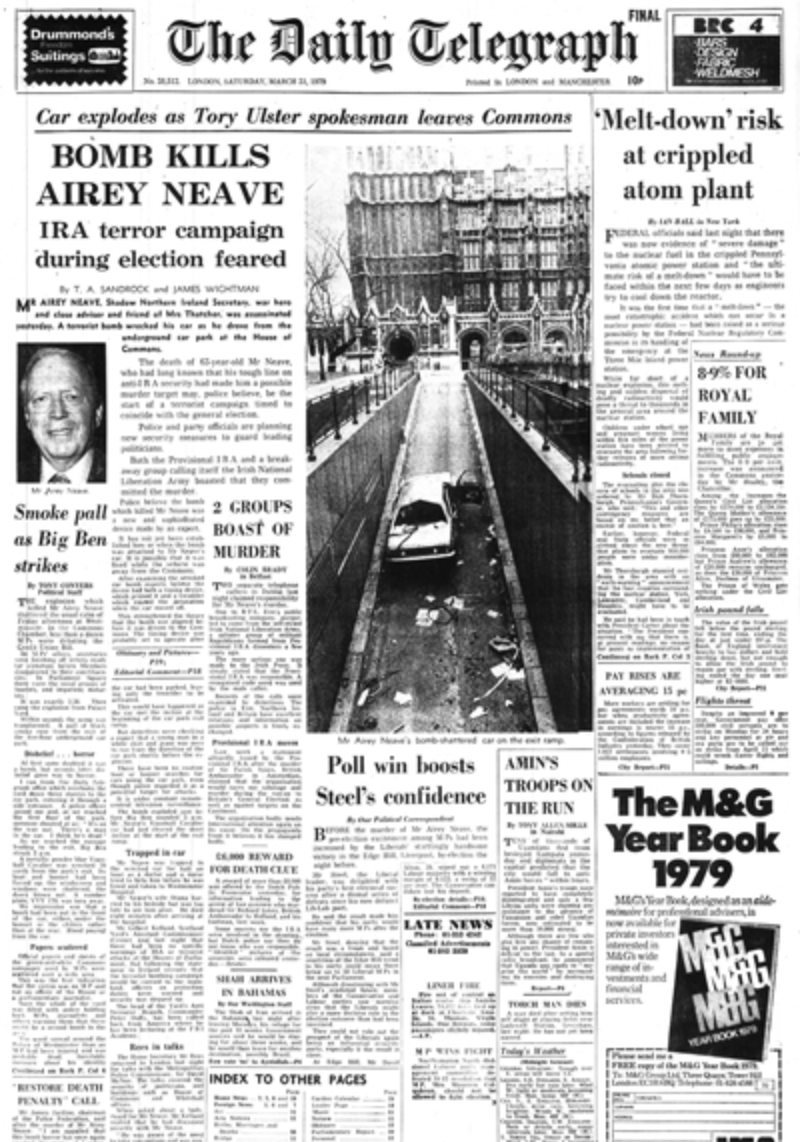
Neave Assassination
From this list I have excluded a number of nearby incidents, including:
1. A Fenian bombing of the underground between Westminster Bridge station and Charing Cross station in 1882.
2. A suffragette bomb planted in Westminster Abbey in 1914.
3. An IRA mortar attack on Downing Street in 1991.
There are also a number of unsuccessful plots (other than 1605) relating to Westminster which I’m still gathering data on – the strangest is a post WW2 plot to drop bombs contained in adapted fire extinguishers on Parliament by an extreme militant zionist from a charted plane flown from France. More later on that!
Of course the nature of the target of these incidents attracts attention because of the political focus of power from the geography of the target. If I may be allowed a slightly political comment, following the stabbing of PC Keith Palmer and the associated murders on Westminster Bridge some commentators expressed the opinion that London was running scared from terrorism, and that the terrorists were winning. The silly phrase “London has fallen” was used by some of the alt-right to describe the incident, and people talked of Londoners being fearful and terrorised. I don’t believe that to be true. With the possible exception of the Gunpowder Plot of 1605, none of the other incidents ever caused anyone to suggest that terrorists could defeat our democracy and culture even though they penetrated the buildings of Parliament themselves. In 400 years, attackers have penetrated parliament many times and British culture and democracy remains. The perpetrator of the attack in 2017, armed with his mothers kitchen knife was shot before he entered the building and we can now forget his name.









